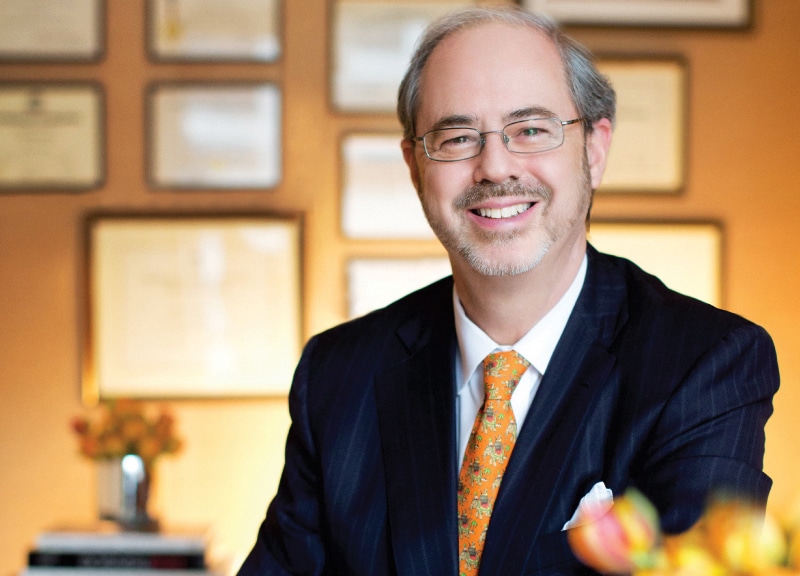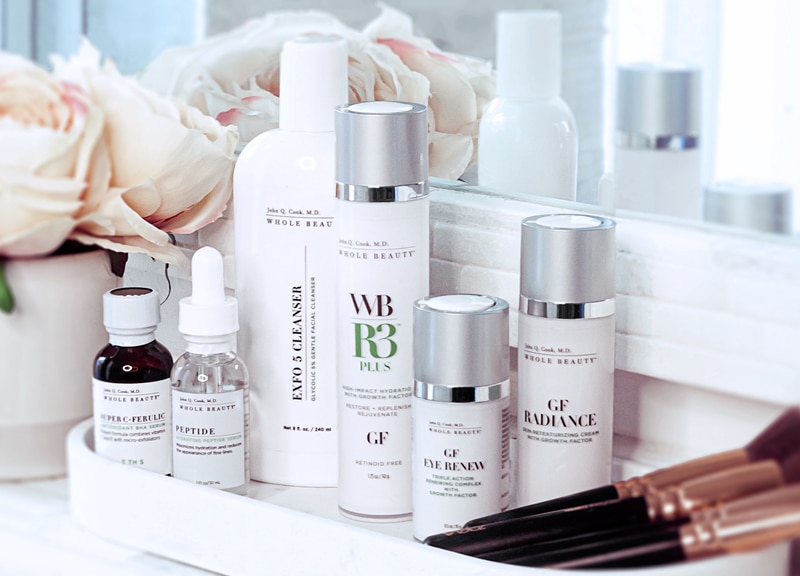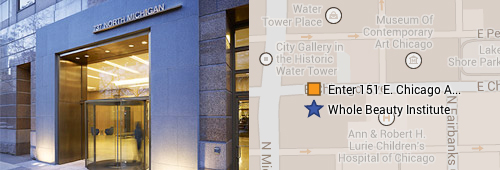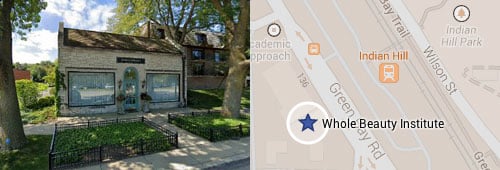Why Dr. John Q. Cook Is the Right Facial Plastic Surgeon for You
Dr. Cook has over 25 years of experience conducting eyelid surgery, and many of those surgeries have been successfully completed under local anesthesia.
Dr. Cook always considers the areas that frame the eyelids in his evaluation. He looks at the position and activity of the brows, the volume and tone of the cheeks, and the quality of the skin. This comprehensive evaluation is key to avoiding a sunken, hollow appearance that may occur after upper and lower blepharoplasty.
Dr. Cook provides a detailed analysis for patients considering eyelid surgery. He considers the fundamental proportions of the face, the degree of structural support of the eyelid, the tone of the eyelid, the fat volumes of the eyelid, and the resilience of the supporting muscle.
When appropriate, Dr. Cook utilizes advanced technologies as part of eyelid rejuvenation, including laser and radiofrequency technology and chemical peels. This is an important part of Dr. Cook’s overall approach to comprehensive facial rejuvenation.
Education and Credentials

Awards and Recognition

REAL PATIENT RESULTS
See the difference experience makes. View the full before & after photo gallery of Dr. Cook and his team.
10 Facts About Eyelid Surgery
Learn “Eye-Opening” Information About This Surgery for Chicago and Winnetka
In many ways, the eyelids form the most nuanced region of the face. Eyelid surgery in the Chicago area—and elsewhere—must be done with tact and respect for the beautiful organization of the eyelid structures. In my opinion, many “standard” eyelid surgery procedures lack clarity of purpose, since they needlessly disrupt important contours and definition points and produce changes that actually move away from what we find in attractive youthful eyelids. Surgery in this region should respect the soft curves of nature and allow for the natural dynamics of eyelid motion.

Contact Whole Beauty® Institute in Chicago or Winnetka for more information about eyelid surgery. Call 312-751-2112 or send a message online.
Request a consult1) All plastic surgery requires skill, but eyelid surgery requires an exquisite fusion of dexterity, artistic visualization, and judgment.
Patients who are considering eyelid surgery would be well advised to trust this area only to a surgeon who takes this responsibility seriously. One demonstration of seriousness of purpose is that your doctor has invested years of advanced study in order to perfect his skills. Another indication is the degree of thoroughness with which he evaluates the eyelid region for eyelid surgery.
2) Successful surgical rejuvenation of the eyelids requires an in-depth understanding and visualization of the structures of attractive, youthful eyes.
Otherwise, the surgeon will not understand what he or she is trying to achieve with eyelid surgery. In the attractive youthful lower eyelid, skin is supple and well toned, but not overly tight. The supporting muscle is resilient and allows for the thousand nuances of expression. The eyelid has a pleasing fullness, but it does not bulge, and it blends imperceptibly with the structures of the upper cheek. The attractive upper eyelid has a clearly defined natural crease that is not excessively high. The area above the crease should not bulge, but it should not be sunken. This transition zone should lead smoothly to a beautifully defined prominence on which the brow rests.
3) As we age, many of us gradually lose the support of the lower eyelid.
If this is not recognized by the surgeon in advance, the eyelid surgery (also known as blepharoplasty) may destabilize the delicate balance between eyelid structures and cause an undesirable drooping of the lower lid margin. Not only is this unattractive, but it can also cause increased evaporative loss of the layer of tears that protect the eyes. In some cases, this can become a serious problem. You can get a general sense of your lower eyelid tone by gently pinching the lower eyelid skin below the lashes and pulling the lid away from the eye. In the lid with good support it will snap back vigorously when released. If the lid drifts slowly back to the eye it may lack adequate support. As long as the surgeon recognizes this, measures can be done to tighten the lid support during eyelid surgery. This will enhance both appearance and function. If your doctor does not evaluate the tone of the eyelid during your examination, you would do well to find another surgeon for eyelid surgery.
4) Eyelid surgery should not harm and ideally should enhance the expressive qualities of the eyes.
Our ability to recognize a face and to make deductions about a person’s mood is related to subtle details and refined motions inherent to eyelid dynamics. We must always keep in mind the eyes’ unique expressive qualities when we formulate a plan for rejuvenation.
5) Clear communication between doctor and patient is important in all forms of plastic surgery, but particularly in eyelid surgery.
There are doctors (and some eyelid surgery patients) who desire a look that I would consider tight and unnatural. There are some women who have undergone aggressive plucking of the fat from their upper eyelid, resulting in a new look that does not reflect their youth. I prefer a softer, gentler look. The key point is to make sure that your surgeon can clearly articulate his goals and that these goals match your own visual esthetic.
6) It is not just about how the eyelids look, but how they function.
During the evaluation of your lids for eyelid surgery, the surgeon must take the time to obtain information about eyelid function. Here are five important aspects that must be evaluated in each potential eyelid surgery patient:
- Evaluation of lower eyelid support by physically testing the resistance of the lower eyelid.
- Evaluation of the position of the eye on side view to determine its relationship to structures of the cheek. This is known as vector analysis.
- Evaluation of the position of the upper eyelid margin in resting gauze. This is necessary to detect what is known as ptosis, a weakness of the muscle that elevates the upper eyelid.
- Questions about eye comfort: whether you experience a sensation of dryness or scratchiness of the eyes and need to use eye drops on a regular basis to maintain comfort. These questions help your doctor determine whether you have a tendency toward the dry eye syndrome, which can be stirred up by eyelid surgery if not recognized.
- Questions about seasonal and food allergies: anything that causes cyclical eyelid swelling and irritation. Each of these areas, if properly recognized, can be compensated with modified eyelid surgery techniques. If your doctor just looks quickly at you and says, “Yeah, you need a bleph,” you may be exposed to unpleasant surprises after the eyelid surgery.
7) It is critical in eyelid surgery—and all aspects of plastic surgery—that your doctor keeps the big picture in mind.
Definition of the upper eyelid is affected by more than the eyelid itself. Often, it is more an issue of the brow settling to obscure normal eyelid structures. Brow settling, or brow ptosis, causes an undesirable phenomenon known as “hooding,” in which a heavy pleat of brow skin settles in front of the upper eyelid to obscure its beautiful form. You can obtain a rough idea of the degree of brow descent in your own face if you look into the mirror and gently elevate the brow by pushing upward on the forehead above the brow. Look at what happens when the brow is brought to an elevated position on the forehead and the clear lines of the region above the upper eyelid are restored. If this resolves the heaviness that you noted in the upper eyelid area, then the proper surgical solution is a brow lift, not eyelid surgery.
The surgeon who fails to help his patient recognize this point does his patient a disservice. He will be forced to overcompensate in the upper eyelid surgery and will end up removing brow skin, as well as eyelid skin. This, in turn, will affect the beautiful flow of the three-dimensional forms in this area and may compromise brow function. I have even seen cases where this injudicious approach results in the brow being pulled down further. Taking too much skin from this important area during eyelid surgery may make it difficult for a future surgeon to correct the problem, since when the brow is brought back to its position of harmony, then the upper eyelid may not close adequately.
As we evaluate the lower eyelid, similar considerations apply. If the upper cheek has lost its volume due to the aging process, the missing cheek fat needs to be replaced or repositioned. Lowering an eyelid bulge to the level of a sunken upper cheek produces a flat look that is precisely the opposite of the beautiful curves of youth.
8) The most common mistakes in upper eyelid surgery are over-resection of skin and a lack of respect for the natural eyelid crease.
Surgeons who fail to recognize these details run the risk of producing a harsh, hollow look or even preventing normal eyelid dynamics after eyelid surgery.
9) The most common mistakes in lower eyelid surgery include excessive fat removal, over-resection of skin, and disruption of eyelid support.
The tight, sunken look of an overdone lower blepharoplasty represents, in my opinion, a failure of artistic conceptualization.
10) For most patients, recovery from eyelid surgery is relatively easy.
Of course, as with all surgery, there will be degrees of swelling, followed by bruising and a general process of settling in after surgery. It is very important to avoid sun after eyelid surgery. Fortunately, this is relatively easy with high-quality sun glasses and nonirritating sun blocks.

If you would like to have a consultation regarding eyelid surgery in the Chicago area or if you have questions for our team, please call 312-751-2112 or contact us online.
Request a consultFacial Surgery Education
Facial Plastic Surgery: 10 Questions
Face Lift Surgery: 10 Facts
Blepharoplasty: 10 Facts
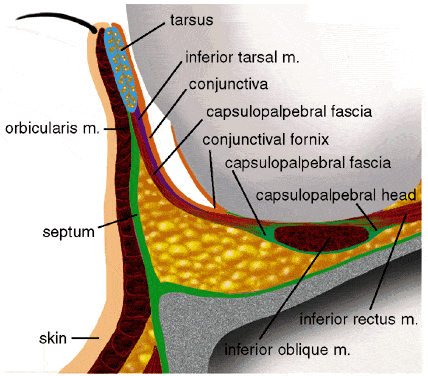
Lower Blepharoplasty
Our eyes are capable of expressing the nuanced complexities of human emotion. With subtle motions...
Dr. Cook's Practice Blog
Explore our practice blog to learn more about non-surgical treatments and plastic surgery procedures available at The Whole Beauty® Institute. Get tips and advice, and discover new ways to improve your health and beauty.
Dr. Cook's HealthGems Blog
Dr. John Q. Cook shares his personal thoughts on well-being, quality of life, and more in HealthGems—from his decades of experience in the industry, studying and working with advanced technology and techniques.
Whole Beauty Skincare
SkinShopMD.com was created by Board-Certified plastic surgeon, Dr. John Q. Cook, as a trusted source for high quality, medical-grade skincare products to protect and rejuvenate your skin.
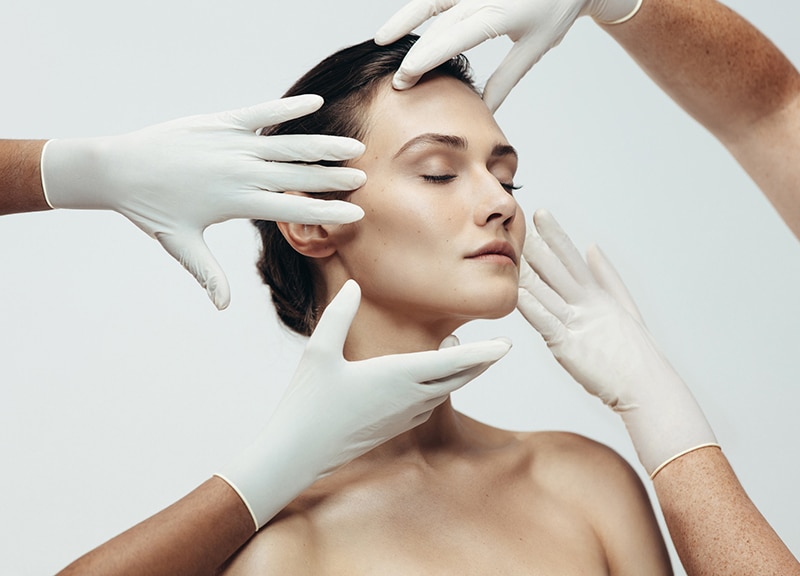
Educational Information
Get informed about cosmetic plastic surgery procedures and rejuvenating non-surgical treatments to help you make informed decisions about your desired treatment based on your aesthetic goals.
Testimonial and Practice Videos
Schedule a Consultation
Schedule a consultation with board-certified plastic surgeon, John Q. Cook, M.D., to learn more about plastic surgery solutions that may be right for you based on your aesthetic goals.
"*" indicates required fields
Our Office Locations
Our locations in the Gold Coast of Chicago and Winnetka in the North Shore reflect our commitment to convenient and discrete concierge-level service.
Chicago Office
737 North Michigan Ave., Suite 760 Chicago IL 60611 (312) 751-2112 Entrance at 151 E. Chicago Avenue
Winnetka Office
118 Green Bay Road Winnetka IL 60093 (847) 446-7562
Located directly across from Indian Hill Metra Station



